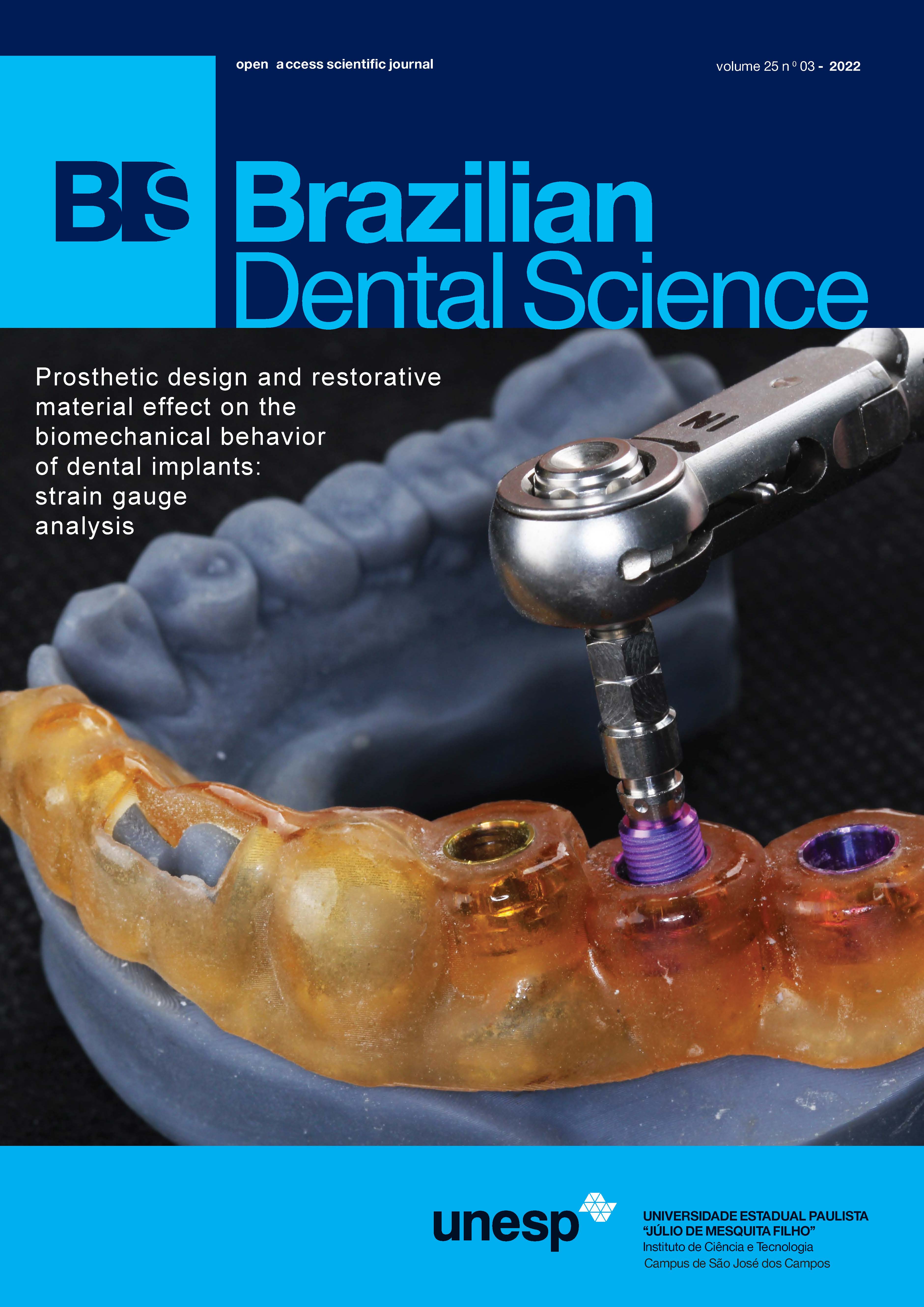Effect of silver-coated silica nanoparticles on the thermal conductivity of thermally activated acrylic resin
DOI:
https://doi.org/10.4322/bds.2022.e3271Abstract
Objective: Thermally activated acrylic resins (RAATs) are widely used in dentures as a base material due to their
good dimensional stability and biocompatibility. However, their low thermal conductivity is a disadvantage, as it
affects acceptance when using dental prostheses. Thus, the objective of this work was to measure the conduction
heat in RAATs with and without incorporation of silica and silver nanoparticles (NP) and rigid reline (RR).
Material and Methods: For this, samples were made and divided into 10 groups (n = 6). The first five groups
were 2-mm-thick samples: G1 (RAAT control), G2 (RAAT + RR control), G3 (RAAT and NP + RR), G4 (RAAT
+ RR and NP), and G5 (RAAT and RR modified by NP). In the other five groups, 8-mm-thick samples were
made: G6 (RAAT control), G7 (RAAT + RR control), G8 (RAAT and NP + RR), G9 (RAAT + RR and NP), and
G10 (RAAT and RR modified by NP). The heat that cross the surface of the specimens was quantified using a
wireless device. The data were submitted to two-factor ANOVA statistical analysis and Tukey´s test with a 5%
significance level. Results: After measuring the temperature variation as a function of time, it can be observed
that there was a statistically significant difference for thermal conduction between the control groups and those
modified with NP. Conclusion: Thus, it was possible to conclude that the NP improved the heat conduction in
RAAT and in the RR because the nanoparticles have a higher thermal conductivity.
KEYWORDS
Thermal conductivity; Acrylic resin; Nanoparticle; Silver.
Downloads
Downloads
Published
How to Cite
Issue
Section
License
Brazilian Dental Science uses the Creative Commons (CC-BY 4.0) license, thus preserving the integrity of articles in an open access environment. The journal allows the author to retain publishing rights without restrictions.
=================




























